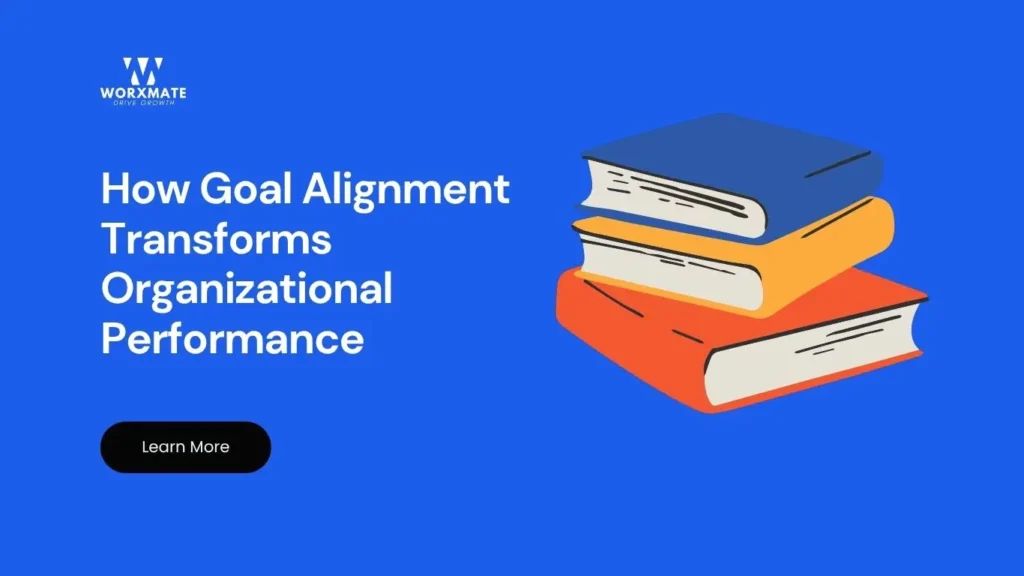Summary:
Goal alignment is the strategic process of ensuring all individuals, teams, and departments within an organization work toward unified objectives. This practice creates organizational harmony by connecting individual contributions to broader business outcomes, eliminating silos and conflicting priorities. When implemented effectively, goal alignment enhances collaboration, accountability, and performance while providing employees with clear purpose and direction in their daily work.
Aligning individual and team goals with organizational strategy is no longer optional—it’s essential for growth and competitiveness. Goal alignment bridges the gap between daily tasks and long-term vision, ensuring every effort counts toward strategic success.
Organizations that achieve strong goal alignment report higher employee engagement and improved outcomes, making it a critical practice in today’s dynamic business environment.
By understanding and applying proven alignment techniques, you can transform abstract objectives into tangible results.
What is Goal Alignment?
Goal alignment refers to the process of ensuring that all individuals, teams, and departments within an organization are working towards the same overarching objectives.
This strategic approach creates a coherent framework where every action, decision, and initiative supports the organization’s broader vision and mission.
At its core, goal alignment involves cascading strategic objectives from the corporate level down to individual performance targets.
This cascading process ensures that each team’s objectives complement one another, promoting synergy and enabling departments to support each other in achieving common goals.
Why Goal Alignment Matters for Organizational Success
-
Enhanced Clarity and Focus
When goals are aligned and cascaded effectively, everyone in the organization understands the company’s vision and strategic objectives.
This clarity enables employees to prioritize their tasks effectively, ensuring their efforts contribute directly to the overall mission.
Clear goal alignment eliminates confusion and conflicting priorities that otherwise lead to inefficiencies and wasted resources. Employees can see how their roles directly support company goals, creating a sense of purpose that drives engagement and performance.
-
Improved Collaboration and Teamwork
Goal alignment fosters a culture of teamwork and collaboration across departments. When teams understand how their specific objectives fit into the broader corporate strategy, they’re more likely to work together cohesively.
This shared understanding encourages cross-functional collaboration, breaking down organizational silos and enabling departments to support each other. The result is a more integrated approach to problem-solving and innovation.
-
Increased Employee Engagement
Employees are more motivated when their goals include a mix of individual and team objectives that clearly link to company goals. According to recent research, 72% of employees cite goal setting as a strong motivator for performance.
When employees see how their work contributes to the company’s overall success, they become more engaged and motivated. This sense of purpose and alignment with corporate goals leads to higher job satisfaction, lower turnover rates, and stronger organizational culture.
Case Study: Seagate’s Goal Alignment Success
-
The Challenge
Technology giant Seagate faced the common challenge of ensuring executive goals aligned with overall corporate strategy and organizational objectives. Like many large corporations, Seagate needed a systematic approach to translate high-level strategic vision into actionable, measurable goals across all organizational levels.
-
The Solution
Seagate implemented comprehensive goal alignment workshops designed specifically for strategy leaders. These workshops focused on aligning executive goals with corporate strategy while ensuring organizational coherence throughout the implementation process.
The workshops employed structured methodologies that helped executives understand the connection between their departmental objectives and broader company goals. This approach created a framework for accountability and performance measurement that extended throughout the organization.
-
The Results
According to Gartner research, Seagate’s goal alignment workshops successfully created organizational coherence and improved strategic execution. The company demonstrated how structured goal alignment processes could transform organizational performance when implemented systematically.
Furthermore, broader industry research supports Seagate’s approach. A Harvard Business Review Analytic Services survey revealed that 82% of executives consider strategic goals “extremely critical” or “very critical” to their organization’s overall success.
How to Implement Effective Goal Alignment
-
Set Clear Organizational Objectives
Start by defining overarching strategic objectives using the SMART framework—specific, measurable, achievable, relevant, and time-bound goals. These objectives should reflect the organization’s vision and provide clear direction for all subsequent goal-setting activities.
Leadership must ensure these objectives are comprehensive yet focused, avoiding the common pitfall of setting too many competing priorities that dilute organizational focus.
-
Communicate Objectives Consistently
Once objectives are defined, communicate them clearly and consistently across all organizational levels. This communication should involve multiple channels—presentations, written documents, team meetings, and one-on-one conversations.
Effective communication goes beyond simple announcement. Organizations must create ongoing dialogue that allows employees to ask questions, seek clarification, and provide feedback on goal relevance and achievability.
-
Align Individual and Team Goals
Work with individuals and teams to set their own goals that support overall objectives. This process creates ownership and engagement while ensuring every role contributes meaningfully to organizational success.
Managers should discuss how specific work aligns with organizational strategy, including business objectives, purpose, and measurable targets for which employees can be responsible.
-
Provide Regular Progress Updates
Maintain transparency through regular progress updates and tracking systems. This ongoing communication keeps everyone informed about advancement toward objectives and allows for timely adjustments when necessary.
Organizations should encourage goal adjustment throughout the year to align with changing business objectives, ensuring continued relevance and maximum return on investment.
Common Challenges in Goal Alignment
-
Communication Breakdowns
Poor communication represents the most significant barrier to effective goal alignment. When strategic objectives aren’t clearly communicated or understood, misalignment and confusion inevitably follow.
Organizations must invest in communication systems and training to ensure managers can effectively translate high-level strategy into actionable team and individual objectives.
-
Competing Priorities
Different departments often develop their own priorities that conflict with broader organizational goals. This siloed thinking undermines alignment efforts and creates internal competition rather than collaboration.
Leadership must actively monitor for competing priorities and intervene when departmental goals diverge from organizational objectives.
-
Lack of Clarity in Objectives
Vague or overly complex objectives make it difficult for individuals and teams to align their goals effectively. Without clear, measurable targets, employees struggle to understand their role in achieving broader success.
Organizations should regularly review and refine objectives to ensure they remain clear, relevant, and achievable.
How Worxmate Transforms Goal Alignment
Worxmate’s comprehensive OKR (Objectives and Key Results) software provides organizations with the tools needed to implement effective goal alignment strategies. Our platform streamlines the entire goal-setting process, from strategic objective definition to individual target tracking.
With Worxmate, organizations can cascade goals seamlessly across all levels, maintain real-time visibility into progress, and ensure every team member understands their contribution to company success. Our intuitive dashboard and automated reporting features eliminate communication barriers while providing the transparency needed for effective alignment.
Ready to transform your organization’s performance through better goal alignment? Book a demo with Worxmate and discover how our OKR software can drive unprecedented alignment and results across your entire organization.



